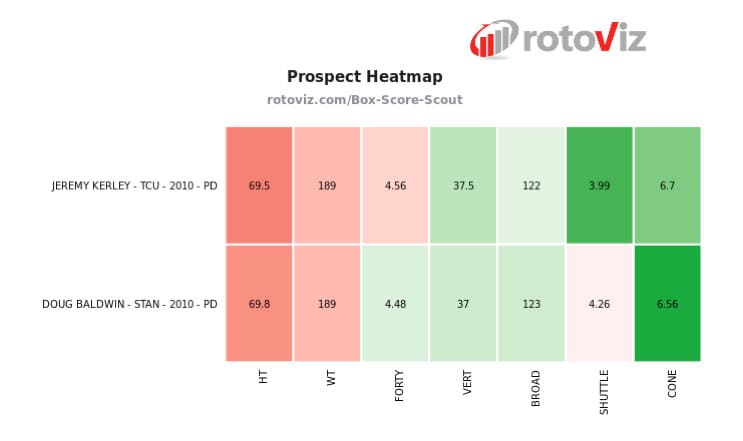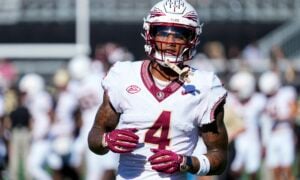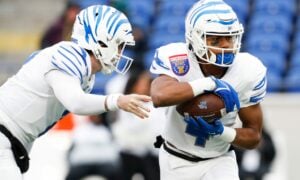Week Two Waiver Wire: A Closer look at Two Players to Consider
I heard our own Ryan McDowell say recently that his biggest advantage in dynasty is being more attentive than his leaguemates, especially on the waiver wire. Drafting is exciting. Trading is fun. Lineup decisions will make you pull your hair out. But waivers are a bit tedious, which is why you can win them. If you’re good at the thing no one else likes, you give yourself a big advantage.
“Stash of the Week” is one step toward winning the waiver wire. Each week, I’ll talk about two players to add — one for shallower leagues (225-250 offensive players rostered) and one for deeper leagues (275-325 offensive players rostered). In some weeks, both players I discuss will be rostered in your leagues. I get that and I welcome feedback about whether I should be digging deeper or shallower.
Shallow Leagues — Cole Beasley, WR DAL
Beasley has probably bounced on and off your league’s waiver wire for the past two seasons. After this week, he should be rostered in all but the shallowest formats.
Let’s take a look at his physical and athletic profile (courtesy of Mock Draftable):
[am4show have=’g1;’ guest_error=’sub_message’ user_error=’sub_message’ ]

Don’t let the comparison list fool you. Beasley is small and explosive, but he’s no Steve Smith. He also wasn’t very productive in college. He had a promising junior season, though. His 1,060 receiving yards accounted for 27.5 percent of Southern Methodist’s passing total, and he added six touchdowns that year. But Beasley plateaued in his senior season. His 1,040 receiving yards were good for 29.1 percent of the team’s passing total and he added only two receiving touchdowns (plus one on the ground). He was never the team’s leading receiver. Aldrick Robinson had the most yards and touchdowns in Beasley’s junior season, and Darius Johnson took that mantle in Beasley’s senior season.
As you’d expect from a player with Beasley’s profile, his upside has been capped in the NFL. He has just one game over 70 yards to his credit — a 112-yard outburst against the Eagles in Week 9 of 2015. But he’s increased his yardage total every season, which led to a career best 536 yards and five touchdowns in 2015.
Most importantly, though, Beasley is the ideal target for Dumpoff Dak Prescott. Prescott averaged 9.1 yards per completion in Week one. Only Tyrod Taylor, Case Keenum and Blaine Gabbert were more conservative. That explains why 12 targets — a whopping 26.7 percent of Prescott’s pass attempts — went to Beasley. As long as Prescott continues to look for the safe option, Beasley is a decent PPR option to plug a Keenan Allen-sized hole in your lineup.
For more information, check out Jaron Foster’s thorough breakdown of Beasley from the 2015 offseason.
Deeper Leagues — Jeremy Kerley, WR SF
Now we move from a small, not particularly athletic slot receiver to … well, yeah. Kerley won’t tempt you to blow all of your blind bidding money, but he could be (almost) everything we wanted Bruce Ellington to be in 2016.
Physically and athletically, he’s pretty similar to fellow 2010 draftee Doug Baldwin (courtesy of RotoViz):

But Kerley hasn’t been very productive in college or the NFL. He did lead TCU in receiving yards his junior season, but the totals were less than impressive: 532 yards (18.8 percent of the team’s passing total) and two touchdowns, plus an extra 50 rushing yards and five scores. In Kerley’s senior season, freshman Josh Boyce took over as the team’s leading receiver. Kerley totaled 575 yards (19.3 percent of the team’s total) and 10 touchdowns, plus another 97 yards and 2 touchdowns on the ground. Kerley’s most productive NFL season was in 2012 with the Jets. He led an injury-depleted (and just not very good) receiving corps with 827 yards and he scored just two touchdowns.
But as with Beasley, Kerley stands to benefit from his role in a dink-and-dunk passing game. In particular, Kerley looks like Blaine Gabbert’s third down security blanket. Six of Kerley’s 11 targets came on third or fourth down, and Gabbert threw to Kerley on 46.1 percent of his third and fourth down pass attempts. In contrast, Kerley was targeted on just 22.7 percent of Gabbert’s first and second down passes – this is precisely the role that 49ers beat writer Grant Cohn projected for Ellington in June:
Kelly prefers using three wide receivers. In his offense, the slot receiver often starts, and typically is a possession receiver who runs “bubble screens” and crossing routes over the middle. Ellington runs these routes well.
During OTAs, Ellington clearly was Gabbert’s favorite receiver. Remember, Gabbert likes throwing short passes over the middle, so Ellington is perfect for him. Don’t be shocked if Ellington catches more passes next season than Torrey Smith, whom most experts consider the Niners’ No. 1 receiver.
At this point, it seems we can substitute Kerley for Ellington and move forward. So long as Gabbert remains the team’s quarterback, Kerley is on track for a 100-target season. That makes him a must add in deeper leagues. Even in shallower leagues, don’t go overboard bidding on Beasley. Bid conservatively and scoop up Kerley if you miss out.
[/am4show]
- Dynasty Capsule: Miami Dolphins - January 26, 2019
- Dynasty Capsule: Buffalo Bills - January 21, 2019
- Dynasty Capsule: Carolina Panthers - January 21, 2018

































































